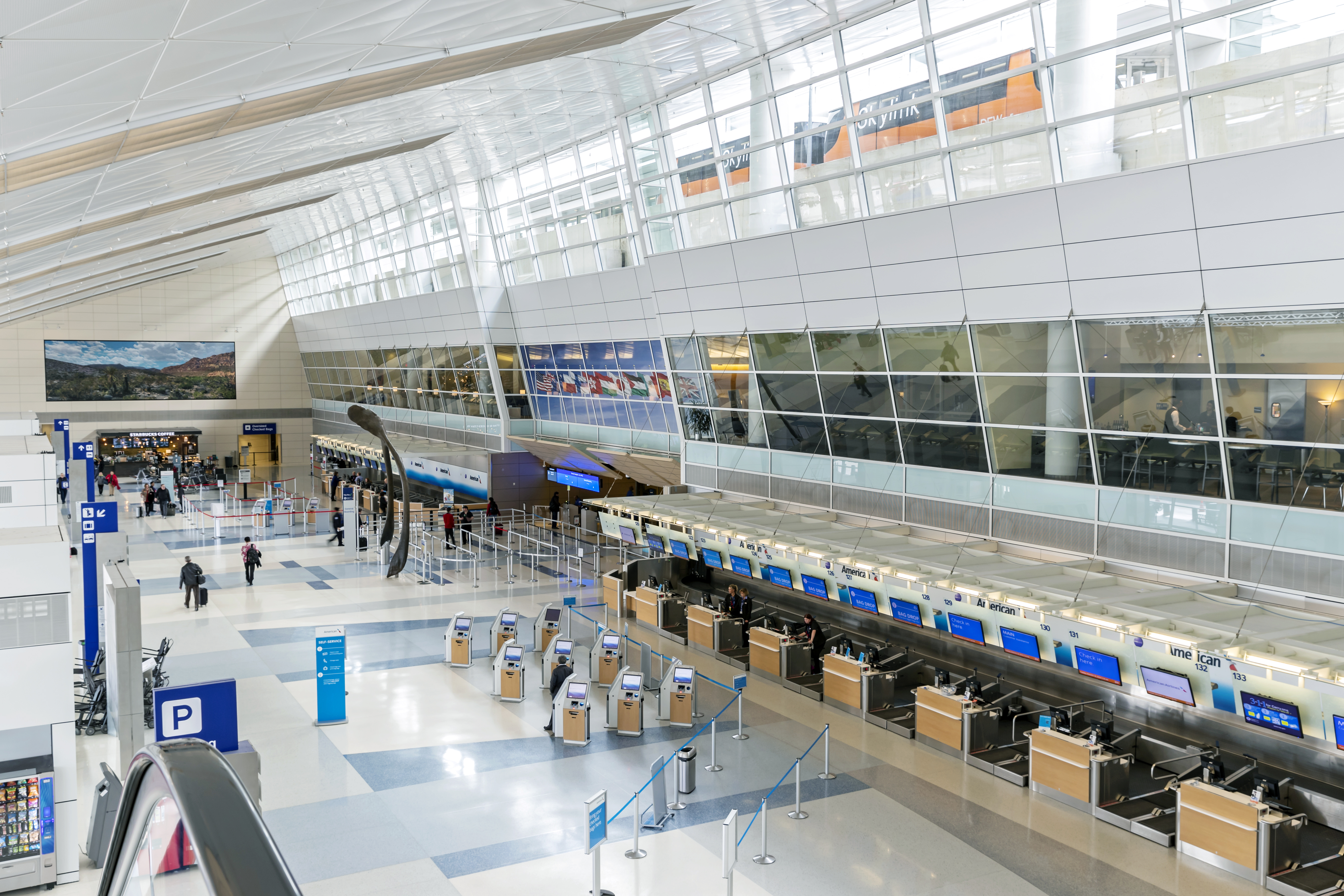The rapid, global advancement of the novel coronavirus and resulting COVID-19 pandemic has upended our lives, economies, and business sectors in a matter of weeks.

Things like being forced to work from home, social separation, shelter-in-place, and essential versus non-essential shopping are all new to us. We are outside of our comfort zone as these new activities are changing our lives, potentially redefining how we will live in the future. So how can the “New Normal” influence aviation terminal design in a positive way?
Managing Social Separation in Airports
The recommended, current six-foot separation between people in public spaces is a challenge to maintain in airports. In the U.S., airport design aligns with the International Air Transport Association (IATA) Level of Service C (LoS C), which promotes constant, comfortable passenger flow, but in potentially closer confines. Level of Service A (LoS A), which is characteristic of European airports, prioritizes free passenger flow, where opportunities for gathering or congregation are minimalized through additional built space. What this means is a LoS A facility is 30 percent to 50 percent larger compared to a typical LoS C airport.
When determining which LoS guideline to follow for terminal design, space and money are the primary considerations. Can the difference in space affect the social separation capabilities during a pandemic? Airport designers also need to consider where to capitalize on space, creating dedicated zones of LoS A that can serve as “safety corridors” to move potentially infectious passengers to designated areas and, more importantly, avoid the co-mingling of these passengers.
Designing Medically Equipped Facilities
Here is a quandary. Some passengers who tested positive for COVID-19 traveled on commercial flights, potentially exposing those around them on the plane and in the terminal. How do you isolate these passengers, to the greatest extent possible, minimizing exposure to the general public who is presumably virus-free?
Airports such as Atlanta’s Hartsfield-Jackson International Airport have CDC-designed isolation rooms on the aircraft ramp level designed to separate potentially infected passengers. They are led from the sterile corridor system by elevator to the isolation rooms without encountering passengers. From there, they are further evaluated and removed in an ambulance. Dallas-Fort Worth International Airport (DFW) has an urgent care facility and the nation’s first airport emergency room facility. These facilities allow DFW to address passenger health concerns immediately and immediately sequester those who are ill.
Looking Ahead
We have an opportunity to make our cities safer places to live through the power of design, but we also need to capitalize on the challenges we are observing now. Let’s create solutions that put the right amount of space in the right terminal areas to encourage, even mandate, safe social distancing, in a cost-efficient manner. We can also promote more cross-sector collaboration to pull in healthcare expertise on the development of airport-based urgent care facilities that are capable of mitigating exposure while focusing on patient care. As designers, we all have an opportunity to step up and do great things to influence the future in this time of need.
Tim Hudson is the principal aviation leader for Gensler






